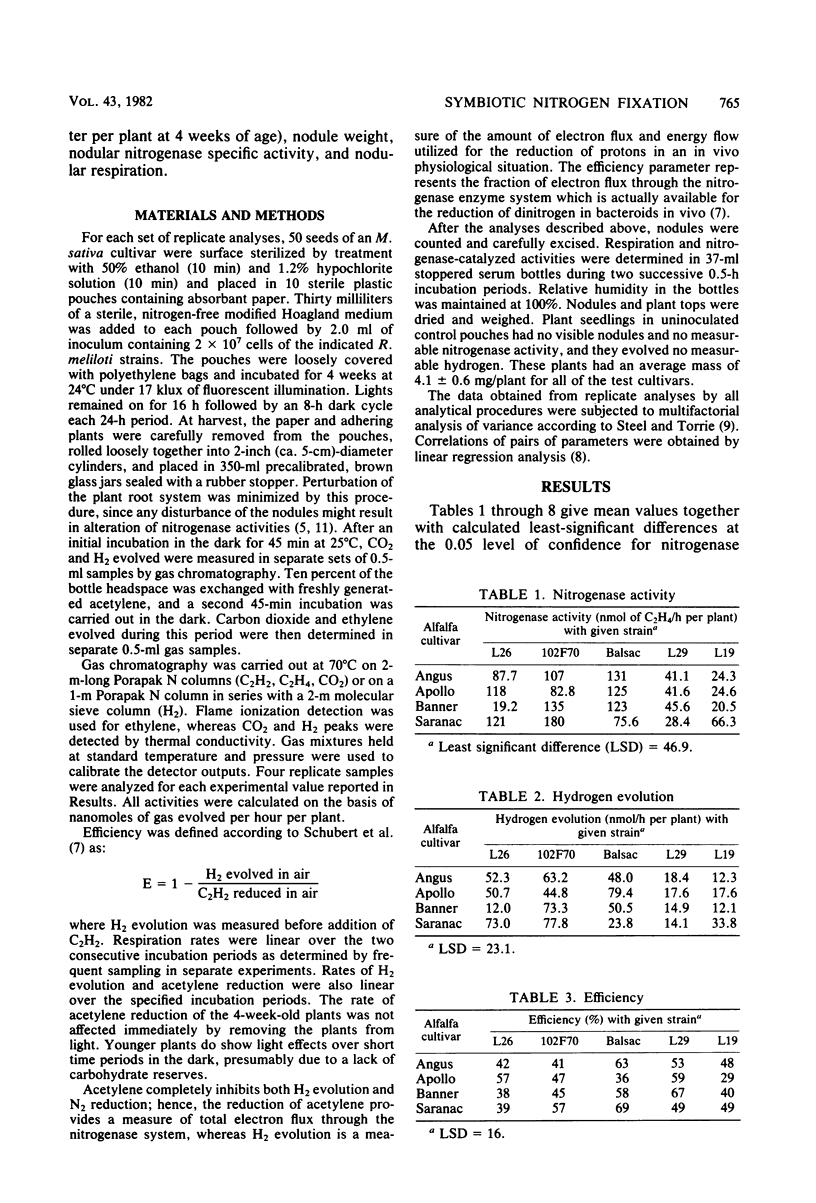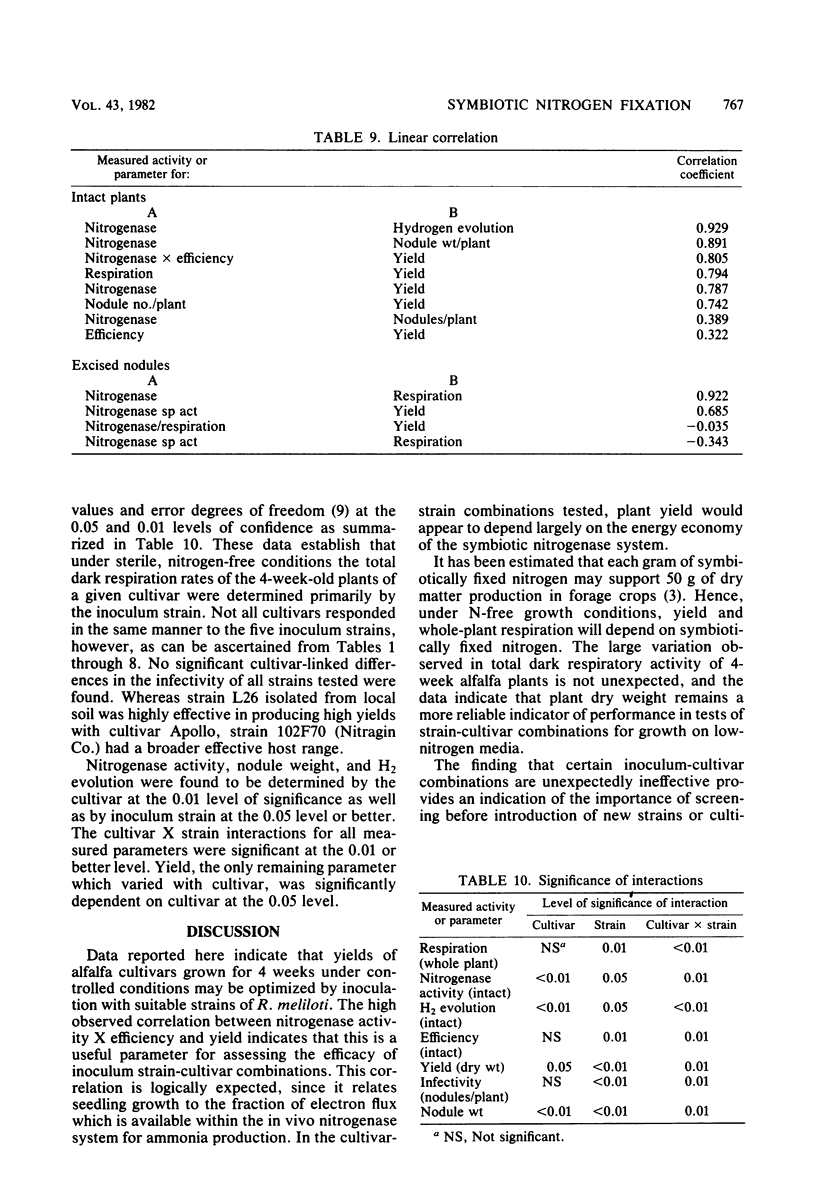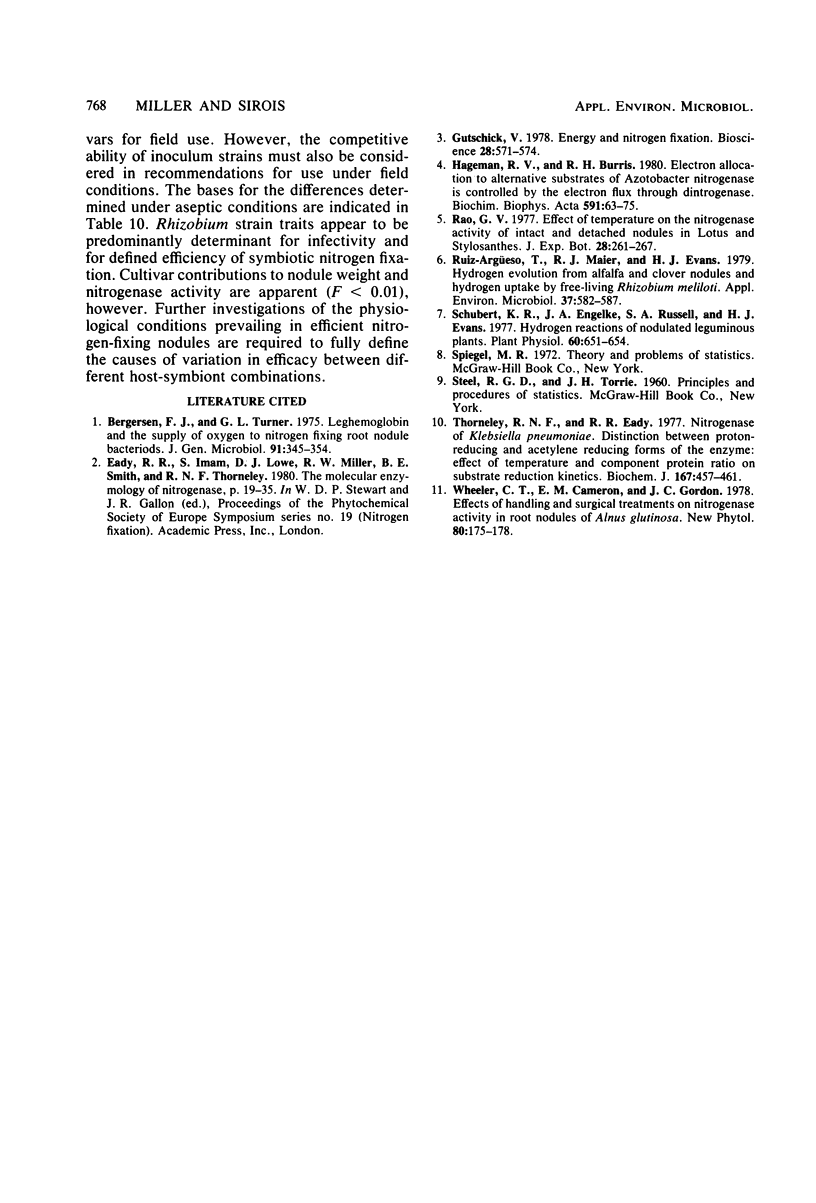Abstract
Five Rhizobium meliloti isolates known to have different capabilities for expression of nitrogenase activity under symbiotic conditions were used to inoculate four representative Medicago sativa cultivars under aseptic conditions. Nitrogenase activities and respiratory activity were measured for whole plants and excised nodules. Dry weights and nodule numbers were also recorded after 4 weeks of growth in plastic pouches on a nitrogen-free nutrient medium. Hydrogen evolution and acetylene reduction rates were used to calculate the fraction of reducing power allocated to dinitrogen reduction. Although the efficiency of the system defined in this way was poorly correlated with plant yield, a very high linear correlation was obtained between yield and the algebraic product of nitrogenase activity and efficiency. High correlation (r > 0.78) was obtained between respiration and nitrogenase activity for whole plants as well as for excised nodules. Nodular respiration accounted for between 10 and 20% of the total plant dark respiration. The four test cultivars exhibited significantly different symbiotic responses to the inocula, although trends in potential for expression of the nitrogenase system by the five R. meliloti strains were evident. There was significant interaction between the host plant and symbiont in determining nitrogenase activity and yield. This screening method allows quantitative discrimination between effective and ineffective host-inoculum combinations.
Full text
PDF




Selected References
These references are in PubMed. This may not be the complete list of references from this article.
- Bergersen F. J., Turner G. L. Leghaemoglobin and the supply of O2 to nitrogen-fixing root nodule bacteroids: presence of two oxidase systems and ATP production at low free O2 concentration. J Gen Microbiol. 1975 Dec;91(2):345–354. doi: 10.1099/00221287-91-2-345. [DOI] [PubMed] [Google Scholar]
- Hageman R. V., Burris R. H. Electron allocation to alternative substrates of Azotobacter nitrogenase is controlled by the electron flux through dinitrogenase. Biochim Biophys Acta. 1980 Jun 10;591(1):63–75. doi: 10.1016/0005-2728(80)90220-0. [DOI] [PubMed] [Google Scholar]
- Ruiz-Argüeso T., Maier R. J., Evans H. J. Hydrogen Evolution from Alfalfa and Clover Nodules and Hydrogen Uptake by Free-Living Rhizobium meliloti. Appl Environ Microbiol. 1979 Mar;37(3):582–587. doi: 10.1128/aem.37.3.582-587.1979. [DOI] [PMC free article] [PubMed] [Google Scholar]
- Schubert K. R., Engelke J. A., Russell S. A., Evans H. J. Hydrogen reactions of nodulated leguminous plants: I. Effect of rhizobial strain and plant age. Plant Physiol. 1977 Nov;60(5):651–654. doi: 10.1104/pp.60.5.651. [DOI] [PMC free article] [PubMed] [Google Scholar]
- Thorneley R. N., Eady R. R. Nitrogenase of Klebsiella pneumoniae. Distinction between proton-reducing and acetylene-reducing forms of the enzyme: effect of temperature and component protein ratio on substrate-reduction kinetics. Biochem J. 1977 Nov 1;167(2):457–461. doi: 10.1042/bj1670457. [DOI] [PMC free article] [PubMed] [Google Scholar]


